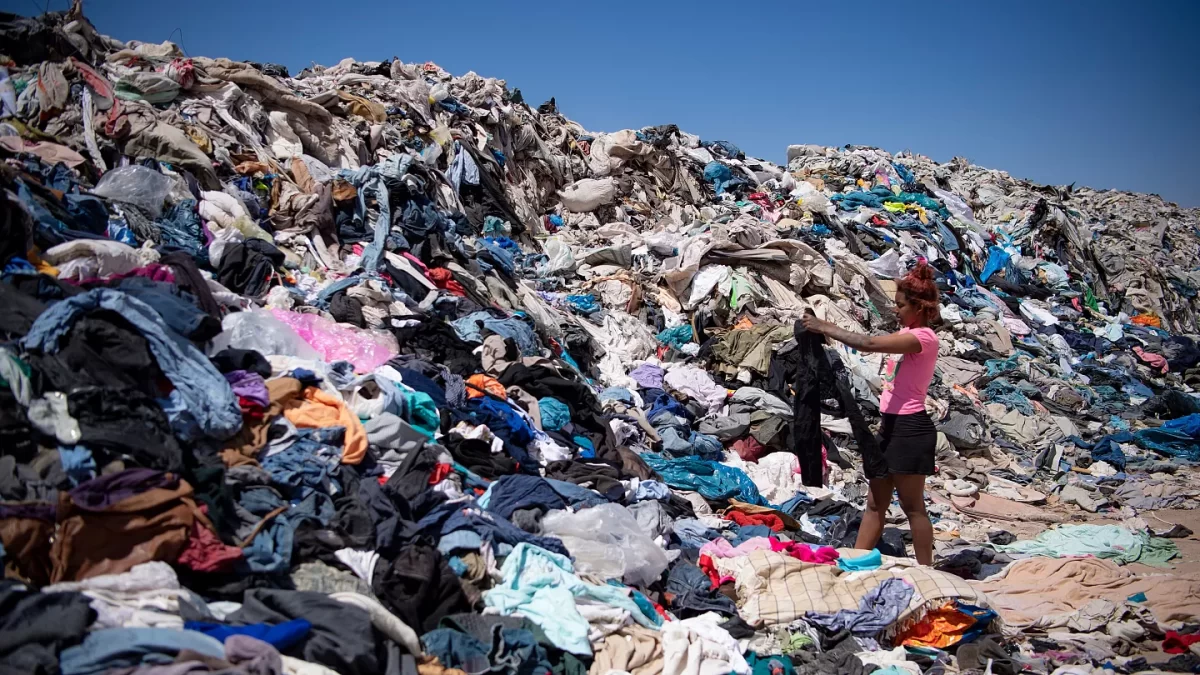Fast fashion is an overconsumption of cheaply made clothing items that are on trend and have a very short lifespan. This is an ever growing problem globally, but particularly in the U.S.. Shein, H&M, Forever 21, and others have become a sensation that is negatively impacting the environment.
The fast fashion industry contributes to the massive amount of greenhouse gas emissions that are plaguing the atmosphere. According to Action for the Climate Emergency, ACE, an organization dedicated to educating people on the current climate issues, the fast fashion industry is estimated to produce 10% of all greenhouse gas emissions and contributes 1.2 billion tons of carbon dioxide into the atmosphere per year. These ever-increasing gas emissions cause an increase of the average surface temperature of Earth over time. This poses issues such as higher severity of storms, changes in ocean level, and change in rainfall patterns. We will have to face these problems in the future if we don’t try to prevent them now.
Along with air pollution, another problem that the industry is causing for the environment is the extreme water pollution it produces. According to Fair Planet, a non-
profit that reports on human rights and environmental justice, “Fabric dying and
treatment practices generate about 20% of the world’s wastewater.” Through these processes, massive amounts
of water are used to first grow the cotton that makes the fabric. Even more amounts of water are later used to dye and finish the materials. Many pesticides are necessary to keep up with the high demand of cotton, and these chemicals cause major pollution to water. According to Seaside Sustainability, a non-profit dedicated to educating others about ocean sustainability, it takes nearly 8,000 different synthetic chemicals to turn raw materials into a finished product on average, and excess water is dumped into local waterways.
The extremely low prices of fast fashion encourages overconsumption of clothing. With the speed that fashion trends are coming and going (also called microtrends), many of the clothing items are used for a short period of time and then they become waste. According to The Round Up,
as much as 92 million tons of clothing end up in landfills per year and the amount will only increase with the higher demand for cheap, on-trend clothes. According to Pirkani, clothing production
has doubled since 2000.
There are many alternatives to throwing away clothes that you no longer have a use for, or that cannot be worn anymore. A few of them are donating and recycling them, but these options are unfeasible for many fast fashion items because the cheap products mean cheap production. Since the clothes are made to be on trend they aren’t made to last due to the speed at which trends die. Clothes from the past and higher quality pieces have higher price tags because they are investments that were made to last. The differences between these two types of clothing show that in the fashion world, the price you pay is the quality of the piece that you get. In fact, according to Earth Org, the number of times a garment is worn has declined by around 36% in only 15 years and the average US consumer throws away 81.5lbs of clothes every year.
Buying a clothing item should be an investment that you can use more than a few times and then throw away.
Not only is the fast fashion industry affecting the environment in many negative ways, the workers are highly exploited. These workers are normally overworked, being forced to contribute longer hours, and underpaid for the work that they do. According to Good On You, 93% of fashion brands they surveyed aren’t paying garment workers a living wage.
Along with employees being overworked and underpaid, the conditions employees have to work in are
completely unsafe. According to Sustain Your Style, 131 workers died and 279 were injured in 2021 in garment and textile factories in the world. Sweatshops in Southeast Asia, specifically China, contribute to this issue with conditions that could include 99 hour work weeks and only a day off once a month.
Another issue with the workings of fast fashion is the concerning amount of child labor they utilize. The International Labor Institute estimates approximately 170 million are engaged in child labor, with many making textiles and garments. Child labor in the industry takes away opportunities for early education and can cause physical and mental developmental problems from working in extremely perilous conditions from a very young
age.
Overall, the growth and popularity of fast fashion is causing more harm than good in a multitude of ways. With the environmental impacts and poor treatment of workers, the more that the industry expands, the worse it will become.






